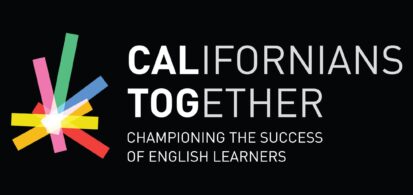With the unexpected school closures due to COVID-19, districts and schools across the state have shifted from in-person instruction to distance learning. This has highlighted the equity challenge to ensure that learning plans meet the needs of English learners (ELs) and their families. This list of considerations includes some of the steps that can be taken by districts and schools to ensure that ELs continue to have full access to the curriculum. The list and examples are not exhaustive but are meant to informally assess and help guide a conversation about how distance learning is being implemented in your district, school, and community.
Provide Full Access to the Curriculum
Providing ELs with resources and lessons that allows them to make academic progress should be an important consideration for all schools and districts. This means that distance learning plans should provide ELs with designated English language development (ELD) and integrated ELD. Moreover, steps should be taken to ensure that learning plans are relevant, engaging, and enable ELs to have full access to the curriculum.
- Ensure designated ELD is including within distance learning plans. For example, designated ELD can be part of a distance learning schedule for ELs as a core subject.
- Ensure that integrated ELD is incorporated within lesson plans for all other subjects. For example, teachers can be provided with a list of tasks for each language domain that can be incorporated within lesson plans.
- Incorporate project-based learning that allows students to learn from their environment. For example, students can write an article about heroes in their community helping others.
- Ensure students have access to a minimum number of minutes of direct virtual instruction. For example, setting district guidelines to ensure that all students have access to a minimum number of minutes of instruction for all subjects.
- Provide culturally relevant enrichment resources and bilingual materials. For example, working with district or city libraries to ensure that students and families can access books, magazines, and other resources in multiple languages.
Meet Technology Needs
Given that ELs come from a variety of backgrounds and many come from low-income households, districts and schools should take steps to ensure that all students have access to the technology and resources they need to access distance learning opportunities.This includes ensuring that all students have a computer at home, a reliable internet connection, and a safe space to learn.
- Ensure students have access to a device for learning at home. For example, distributing chromebooks to students without a computer at home.
- Ensure students have access to the internet. For example, negotiating agreements with commercial vendors to provide free access without the need to disclose personal or financial information.
- Ensure students have a safe space to learn. For example, calling families to discuss strategies for creating a safe place to learn at home.
- Ensure students have access to the curriculum in their devices in the language of instruction. For example, uploading resources in devices before distribution.
Proactively Engage Parents and Guardians
Parents and guardians are an essential component of effective distance learning. Therefore communications with them in their home language and with staff that are culturally competent is important. Districts and schools must be proactive in reaching out to parents and guardians, both because it provides them with important information but also because these interactions can provide school leaders with important information about the needs of their children.
- Ensure that all communications are translated in the student’s home language. For example, providing a link for direct translation within the district and school webpages.
- Plan to reach out to parents and guardians on an ongoing basis to understand the needs of students. For example, having ELD coordinators calling families regularly for support.
- Provide opportunities for parents and guardians to learn strategies, in the language they understand, to support the education of their children at home. For example, organizing webinars for families on distance learning tips.
Meet the Needs of the Whole Child
This time of physical distancing and disruption to daily lives has an impact on us as humans and can create added stress on children, their families, and communities, It is for this reason that the needs of the whole child must be considered in order for them to be fully prepared to learn. This includes creating partnerships with nonprofits, cities, counties, and other partners to ensure that essential resources are available to families and children.
- Provide children and families with socioemotional supports. For example, establishing a district hotline to easily connect students and families with social-emotional supports.
- Ensure students continue to have access to meals. For example, establishing a daily schedule for families to pick-up meals and for meals to be delivered to families without a car.
- Create a resource list of essential services for families and children. For example, regularly updating a dedicated COVID-19 page within the school and district website that includes information about access to childcare for essential workers, healthcare options, and resources for families facing economic challenges.
